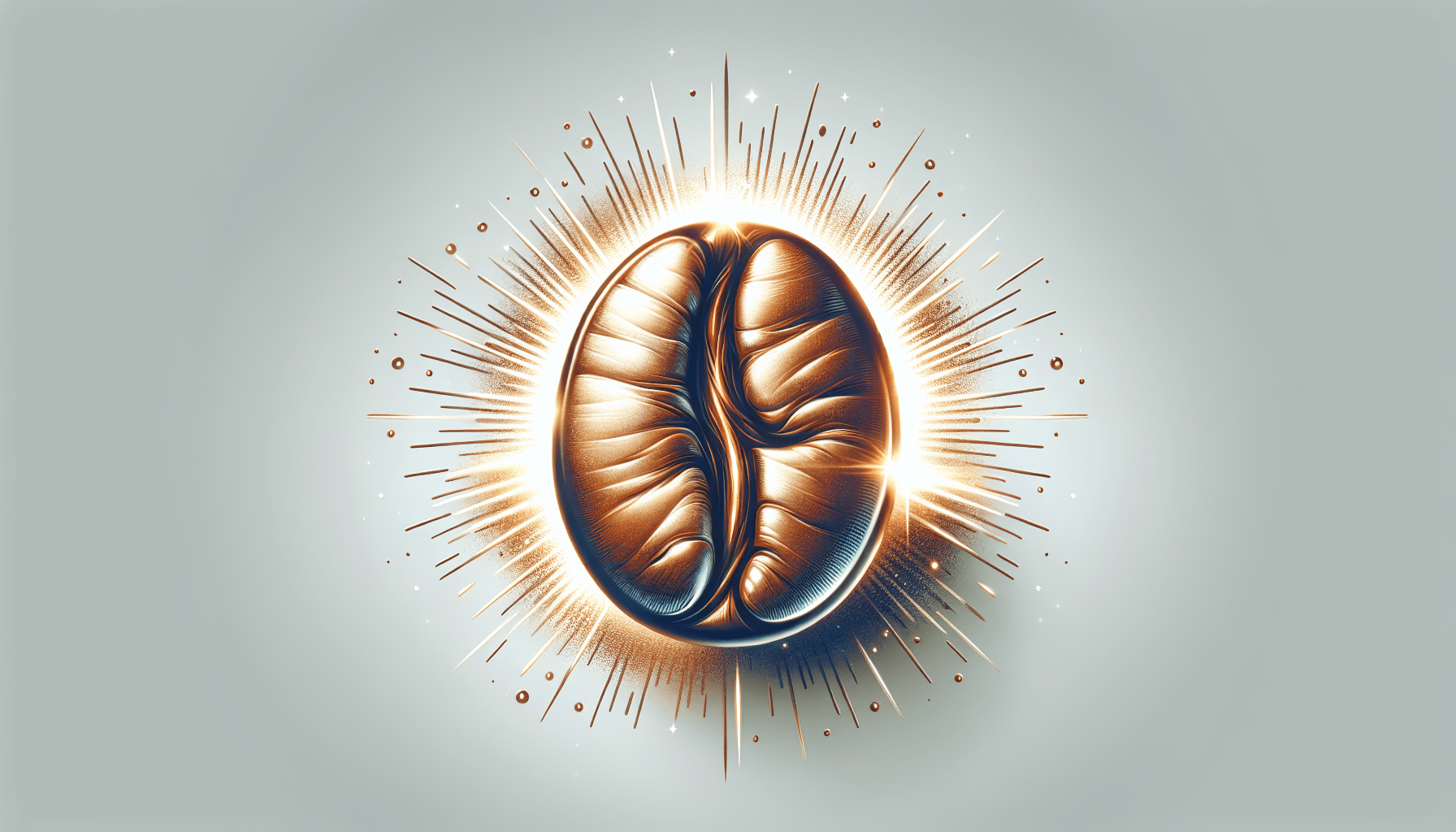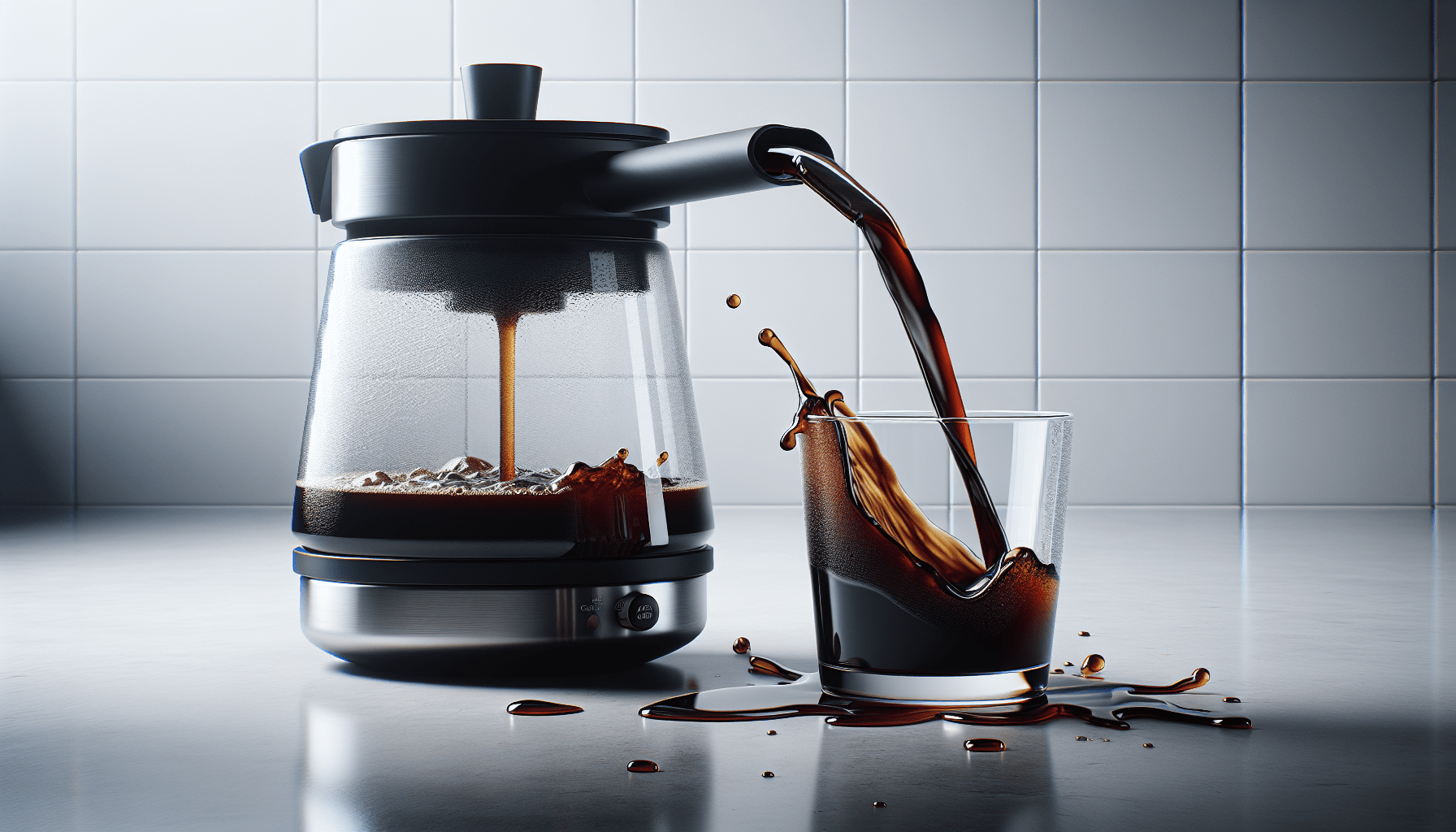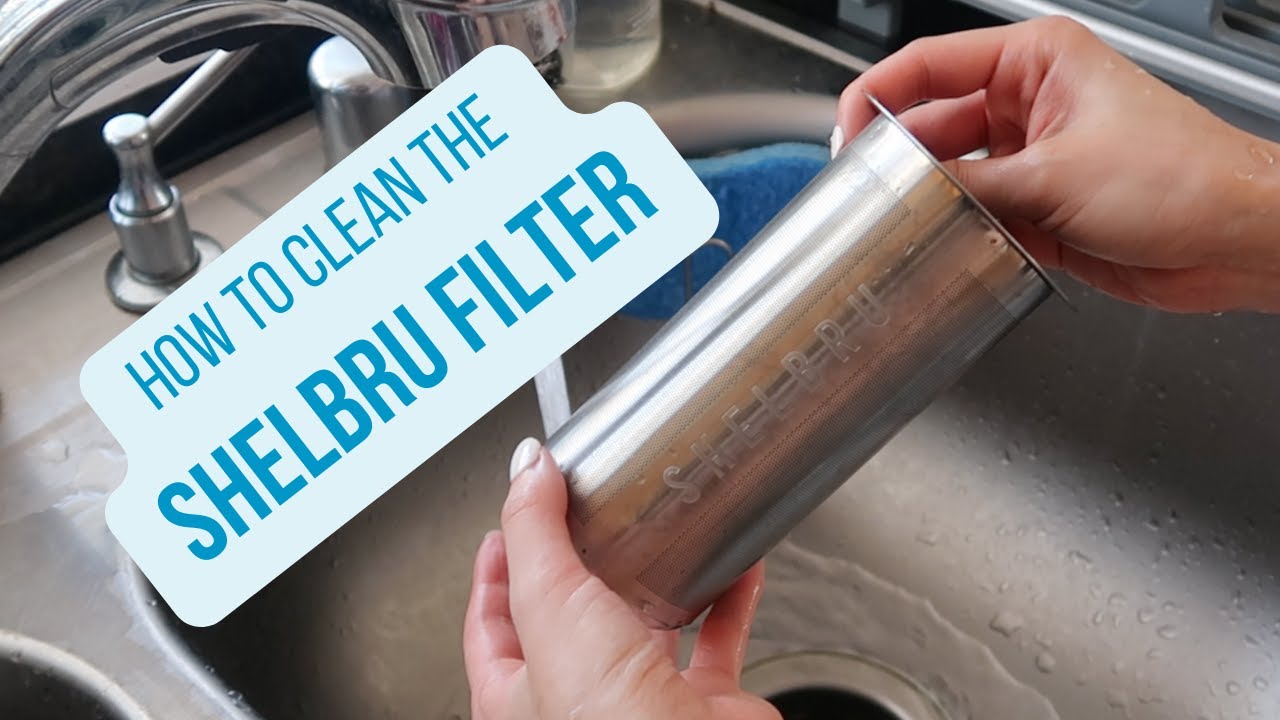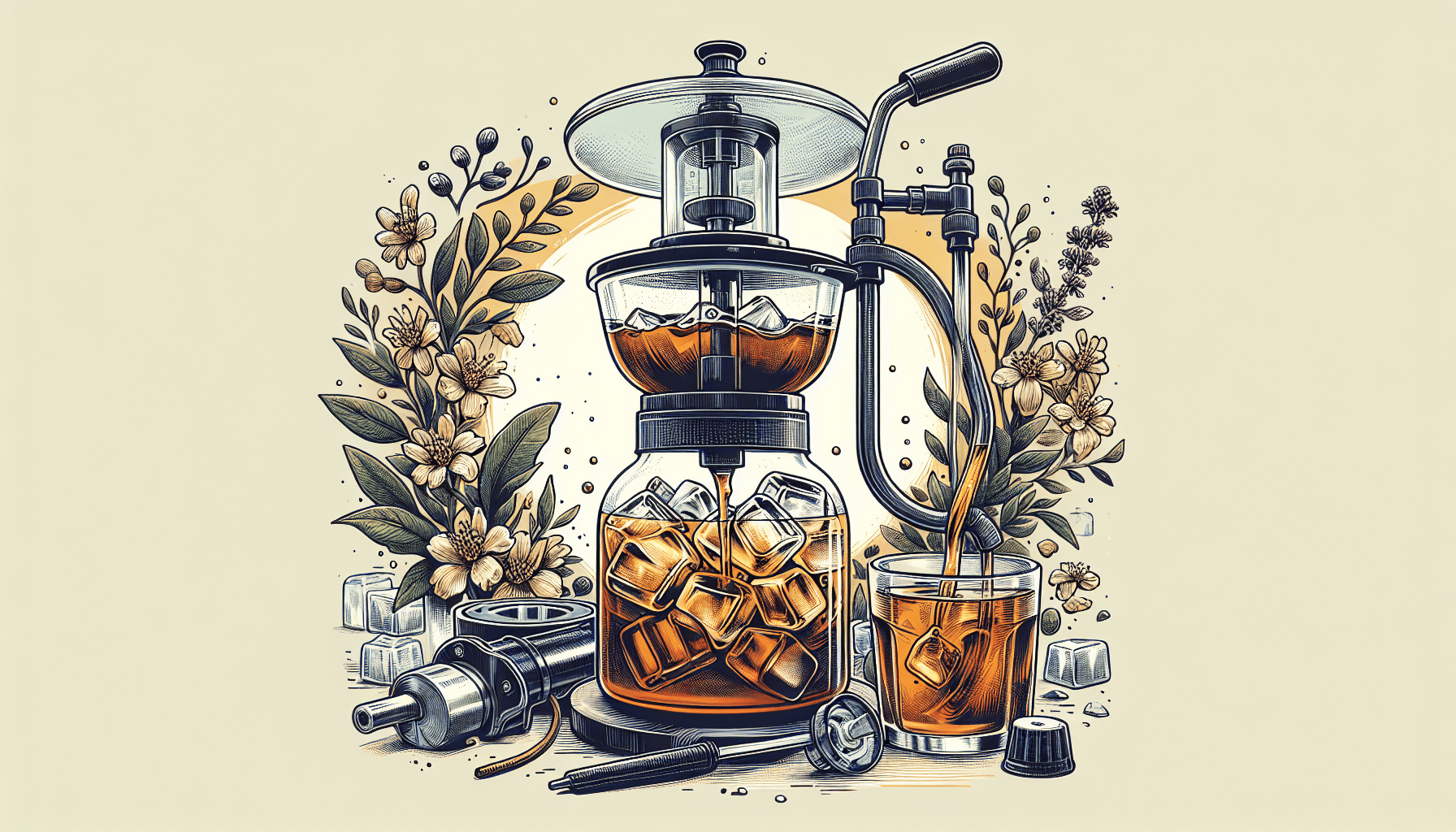Are you tired of your cold brew turning out bitter every time you make it with your cold brew maker? Well, fret no more! In this article, we will explore some simple yet effective tips to help you prevent bitterness in your homemade cold brew. Whether you’re a beginner or a seasoned cold brew enthusiast, these easy-to-follow guidelines will ensure that your next batch of cold brew is smooth, flavorful, and bitterness-free. So grab your favorite cold brew maker, and let’s get started on mastering the art of creating the perfect cup of cold brew without any hint of bitterness.
Understanding the Cold Brew Process
What is cold brew coffee?
Cold brew coffee is a method of brewing coffee that involves steeping coarsely ground coffee beans in cold or room-temperature water for an extended period of time. This process results in a smooth and less acidic coffee concentrate, which can be enjoyed over ice or diluted with water or milk.
How does the cold brew process work?
The cold brew process works by allowing the coffee to slowly extract flavors from the ground beans over an extended period of time. The coarsely ground coffee is combined with water in a container, such as a cold brew maker or a mason jar, and left to steep for anywhere between 12 to 24 hours. During this time, the water absorbs the coffee’s flavors, resulting in a rich and smooth beverage.
Why does cold brew sometimes turn out bitter?
Cold brew coffee can sometimes turn out bitter if certain factors are not properly taken into consideration. One common reason for bitterness is using low-quality coffee beans. Opting for high-quality coffee beans is essential to achieving a delicious and balanced cold brew. Additionally, brewing for too long or using a fine grind size can also result in a bitter taste. Ensuring the right brewing time and grind size is essential to prevent bitterness in cold brew coffee.
Choosing the Right Beans
Selecting high-quality coffee beans
When it comes to making cold brew coffee, the quality of the beans is crucial. Look for freshly roasted coffee beans that have been sourced from reputable coffee farms or roasters. Ideally, go for beans labeled as “single-origin” or “specialty-grade,” as these are often known for their distinct flavors and overall higher quality. Investing in quality beans will greatly enhance the taste and depth of your cold brew.
Opting for medium to coarse grind size
The grind size of the coffee beans plays a significant role in the extraction process. For cold brew coffee, it is recommended to use a medium to coarse grind size. This allows for a slower extraction and prevents over-extraction, which can lead to bitterness. Using a burr grinder is preferable, as it ensures a more consistent grind size compared to blade grinders.
Considering the roast level
The roast level of the coffee beans can also impact the overall flavor profile of your cold brew. Lighter roasts tend to bring out the brighter and more delicate flavors, while darker roasts offer a bolder and slightly smoky taste. Experiment with different roast levels to find the one that best suits your preferences. Remember that each roast level will result in a slightly different cold brew experience.
Water Quality and Ratios
Using filtered water
The quality of the water used in cold brew coffee is often overlooked but can greatly affect the taste of the final product. Using filtered water is recommended to remove any impurities or minerals that may alter the flavor. Avoid using distilled or overly soft water, as it can result in a flat-tasting cold brew. Filtered tap water or bottled spring water are good options for achieving optimal water quality.
Finding the right water-to-coffee ratio
The ratio of water to coffee grounds is an important aspect to consider when making cold brew. The general guideline is to use a ratio of 1 part coffee to 4 parts water, although this can be adjusted according to personal preference. For example, if you prefer a stronger cold brew, you can use a higher ratio of coffee to water. Experimenting with different ratios will help you find the perfect balance of flavors for your taste.
Brewing Time and Temperature
Understanding the recommended brewing time
The brewing time for cold brew coffee can vary depending on personal preference and the desired flavor profile. As a starting point, a brewing time of 12 to 16 hours is commonly recommended. However, some coffee enthusiasts prefer a longer brew time of up to 24 hours for a more intense flavor. It is important to note that brewing for too long can result in over-extraction and bitterness. Finding the right brewing time for your taste may require some experimentation.
Experimenting with different infusion times
If you find that your cold brew coffee is consistently turning out bitter, it may be worth experimenting with shorter infusion times. Try reducing the brewing time by a couple of hours and taste the difference. A shorter infusion time can help prevent over-extraction and result in a smoother, less bitter cold brew. Remember to make note of the infusion time that yields the best results for future reference.
Avoiding exposure to high temperatures
Cold brew coffee gets its name from the fact that it is steeped in cold or room-temperature water. It is important to avoid exposing the coffee to high temperatures during the brewing process, as this can lead to a bitter taste. Keeping the coffee mixture refrigerated or away from heat sources while it is steeping will help maintain the desired flavors and prevent any unwanted bitterness.
Proper Equipment and Techniques
Choosing the right cold brew maker
Investing in a high-quality cold brew maker can greatly simplify the brewing process and improve the overall results. There are various types of cold brew makers available, including immersion-style brewers and slow drip brewers. Consider factors such as capacity, ease of use, and the filtration system when selecting a cold brew maker. Reading reviews and researching different options will help you make an informed decision.
Using a paper or metal filter
Using a filter during the brewing process helps remove any unwanted sediments or fine particles from the final cold brew. Paper filters are commonly used and are readily available. They effectively remove sediment and produce a clean and smooth beverage. Alternatively, some cold brew makers come with built-in metal filters that can be reused. These metal filters provide a different flavor profile and may allow some natural oils to pass through, resulting in a fuller-bodied cold brew. Experiment with different filters to find the one that suits your taste preferences.
Avoiding agitation during brewing
Agitating the coffee grounds during the brewing process can lead to over-extraction and a bitter taste. It is important to avoid stirring or shaking the cold brew mixture once it has been combined. Instead, gently submerge the coffee grounds in the water and allow them to steep undisturbed. This will help maintain a balanced and smooth flavor profile in the final cold brew.
Grind Consistency and Brewing Methods
Ensuring uniform grind size
Consistency in grind size is crucial for achieving optimal extraction during the cold brew process. Using a burr grinder can help ensure a more consistent grind compared to blade grinders. Aim for a uniform grind size throughout the coffee grounds to promote even extraction. Unevenly ground coffee can result in over-extraction of finer particles and under-extraction of coarser particles, leading to an imbalanced and potentially bitter cold brew.
Exploring different brewing techniques (immersion vs. slow drip)
There are different cold brew brewing techniques to consider, such as immersion-style and slow drip methods. Immersion-style brewing involves fully submerging the coffee grounds in water for the entire duration of the steeping process. This method tends to produce a stronger and more full-bodied cold brew. On the other hand, slow drip brewing involves a slower and more controlled extraction process using a specialized apparatus. This method often results in a lighter and more delicate cold brew. Experiment with different brewing techniques to discover your preferred flavor profile.
Storing and Serving Cold Brew
Storing cold brew in airtight containers
Proper storage is essential for maintaining the freshness and quality of your cold brew. Once the brewing process is complete, transfer the cold brew into airtight containers, such as mason jars or glass bottles with tight-fitting lids. Airtight containers minimize exposure to air and help prevent oxidization, which can negatively impact the flavor. Store the cold brew in the refrigerator for up to one week for best results.
Preventing prolonged exposure to air
To prevent your cold brew from developing a bitter taste, it is important to minimize its exposure to air. Each time you pour a serving of cold brew, ensure that you tightly seal the container afterward to prevent oxidation. Oxygen can quickly degrade the flavors and freshness of the cold brew, resulting in a less enjoyable drinking experience. Taking these extra precautions will help maintain the smoothness and balance of your cold brew.
Serving cold brew over ice or diluted
Cold brew coffee is typically enjoyed over ice or diluted with water or milk to taste. The concentrated nature of cold brew allows for versatility in serving options. If you prefer a stronger brew, pour the cold brew concentrate over ice and add water or milk as desired. Diluting the cold brew with equal parts water or milk will create a milder yet still flavorful beverage. Experiment with different ratios until you find the perfect balance that suits your taste buds.
Experimenting with Flavors and Additives
Adding flavors with syrups or extracts
One of the advantages of cold brew coffee is its ability to pair well with various flavors and additives. If you prefer a flavored cold brew, consider experimenting with syrups or extracts. Vanilla, caramel, or hazelnut syrups can add a hint of sweetness and complexity to your cold brew. Alternatively, a few drops of flavored extracts, such as almond or mint, can infuse your cold brew with a subtle twist. Start with a small amount and gradually adjust to your desired level of flavor.
Trying different additives (milk, cream, spices)
Cold brew coffee can be customized to suit individual preferences by adding different additives. Milk or cream can provide a creamy and smooth texture to the cold brew, while also balancing any acidity. Experiment with different types of milk, such as almond or oat, to discover new flavor combinations. Additionally, spices like cinnamon or nutmeg can add warmth and depth to your cold brew. Sprinkle a dash of spice over your cold brew and stir gently to incorporate the flavors.
Sweetening options for a less bitter taste
If you find your cold brew leaning towards bitterness, consider sweetening it to counterbalance the taste. Honey, agave syrup, or simple syrup can be added in small increments until the desired sweetness is achieved. Stir well to ensure the sweetener is evenly distributed throughout the cold brew. Adjust the sweetness according to personal preference, remembering that a little goes a long way. The sweetness can help mask any bitterness and create a more enjoyable drinking experience.
Understanding the Impact of Time
Allowing cold brew to bloom before steeping
To enhance the extraction process and bring out the flavors of the coffee beans, it is recommended to allow the cold brew to bloom before steeping. Blooming involves pre-wetting the coffee grounds with a small amount of water for about 30 seconds. This helps release trapped carbon dioxide, allowing for better extraction during the brewing process. Once the initial bloom is complete, proceed with adding the remaining water and continue steeping as usual.
Avoiding overextraction by removing grounds on time
Overextraction can occur if the coffee grounds are left in contact with the water for too long. To prevent this, it is important to remove the coffee grounds promptly after the desired brewing time has elapsed. Leaving the grounds in contact with the liquid for an extended period can result in a bitter taste and an over-extracted cold brew. Use a fine-mesh sieve or a coffee filter to strain the cold brew, ensuring that no coffee grounds remain.
Cleaning and Maintenance
Regularly cleaning your cold brew maker
Proper cleaning is essential for ensuring the longevity and quality of your cold brew maker. After each use, rinse all components of the cold brew maker thoroughly with warm water to remove any residual coffee particles. Use a mild dish soap if necessary, but be sure to rinse thoroughly to remove any soapy residue. Allow all components to air dry completely before reassembling or storing to prevent the growth of mold or bacteria.
Ensuring proper maintenance for optimal brewing
In addition to regular cleaning, proper maintenance of your cold brew maker is important for optimal brewing results. Always refer to the manufacturer’s instructions for specific care guidelines. Some cold brew makers require periodic descaling or deep cleaning to remove mineral deposits that may affect the taste. Take note of any specific maintenance requirements and follow them accordingly to ensure the longevity and performance of your cold brew maker.
By following these tips and techniques, you can elevate your cold brew coffee experience and prevent bitterness in your cold brew. Remember to always experiment and tailor your brewing process to suit your taste preferences. With the right beans, water quality, brewing time, and equipment, you’ll be able to enjoy a delicious and smooth cold brew every time. Happy brewing!




